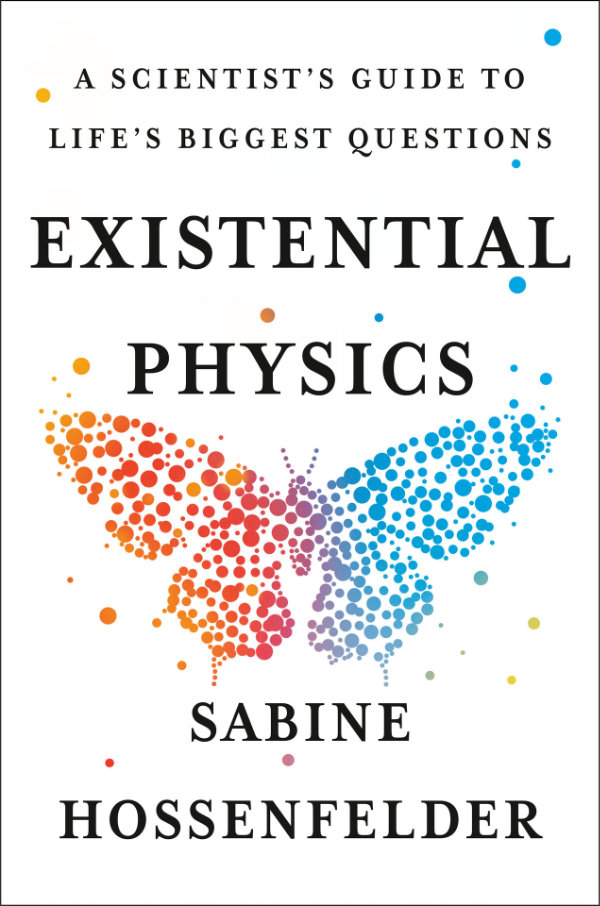Existential Physics: Book review

Sabine Hossenfelder is fearless. Though she would allow you to believe anything you want to, as long as your belief is at least consistent with what we know about science, she will remind you whenever there is no evidence in favor of your belief. Indeed, she says,
If your belief conflicts with empirically confirmed knowledge, then you are not seeking meaning; you are delusional.
If you want to hold onto your delusions, she avers, then this book is not for you. She treats beliefs that do not conflict with what we know as harmless and indeed thinks that “scientists should acknowledge that science is compatible with many traditional sacred beliefs.” Thus, she (indirectly) criticizes Richard Dawkins and the “new atheists” for being too rigid in their beliefs: we have no evidence to distinguish between a Big Bang that was created by God and one that was not. She is right.
Indeed, she reminds us that there is no empirical evidence in favor of
- the many-worlds hypothesis of quantum mechanics;
- the multiverse, multiple universes, or an infinite universe;
- a mathematical universe, in which math is real and we are not;
- panpsychism, the conceit that all matter is to some degree conscious;
- a universe in which we are simulations;
- cyclic universes;
- cosmic inflation in the early universe; and
- a universe designed by God.
She calls these “modern creation myths written in the language of mathematics.” They are, basically, religious beliefs, and can generally not be falsified. She even doubts the heat death of the universe, in part because there may be longer-term or longer-scale effects of which we are unaware. Additionally, Hossenfelder thinks the second law of thermodynamics may itself be overturned when we develop a quantum theory that includes gravity, though I think that is pure speculation.
In a section on reductionism, she says,
… [T]he available evidence tells us that the whole is the sum of the parts, not more and not less. Countless experiments have confirmed for millennia that things are made of smaller things, and if you know what the small things do, then you can tell what the large things do. There is not a single known exception to this rule. There is not even a consistent theory for such an exception.
Oddly, the ensuing discussion softens the statement somewhat, and she notes that we do not know why reductionism works, only that it does. But she ends up with the pithy remark, “If you say ‘holism,’ I hear ‘bullshit.’” Me too.
Hossenfelder is pretty much a strict determinist and devotes a few pages (contra Daniel Dennett, Sean Carroll, and others) to explaining why she thinks we do not have free will. Her argument could perhaps expose more clearly a confusion between being unpredictable and being truly random (even if this confusion is dressed up as an emergent property). Several times she reminds us that “the future is still fixed except for occasional quantum events that we cannot influence.” To believe in truly free will, you practically have to be a dualist. (As for me, I act as if I have free will because I have no choice.)
On quantum mechanics, Hossenfelder takes on the Copenhagen interpretation and notes that the “collapse” of the wavefunction is something of a misnomer, in that it makes you think that the wavefunction, which fills all space, is slurped faster than the speed of light into a fixed location whenever we make a measurement. Instead, she says that the collapse would better be called the update or the reduction. What is a measurement? It is any interaction that is strong enough to destroy the quantum behavior of the system and does not require a conscious observer. So (as I once put it elsewhere) a photographic plate does not have to wait till it is developed and indeed looked at by a conscious observer for a latent image to be present in the undeveloped plate. A measurement has been made every time a photoelectron is trapped in a photographic grain. (Maybe measurement is also a misnomer.) The grain will be developed, Hossenfelder would say, according to ordinary classical chemistry.
Hossenfelder acknowledges that quantum mechanics is random. I disagree and suspect that deep down it too is deterministic. I will grant that this is a religious belief of a sort, but I can defend it with a better argument than, say, the argument from first cause.
I studied special relativity for perhaps a couple of weeks, admittedly long ago, and I found the first chapter, on special relativity, somewhat hard in places. Hossenfelder notes that Now [her capitalization] is undefinable, and you can always find some place in the universe where some observer could in principle observe your grandmother in her daily activities. In that case, your grandmother is not just alive and kicking, but immortal. I do not know exactly what she was trying to prove with that discussion, but I find it to be cold comfort in that we can never get back to that time in our own frame of reference (because of irreversibility, a subject of another chapter).
I have uncharacteristically few quibbles, but I think it is worth noting that the unit of temperature is the kelvin – plural, kelvins – not the Kelvin, and certainly not the degree Kelvin. Thus, both “2.7 Kelvin” and “a degree Kelvin” are incorrect and should have been caught by an editor. Otherwise, I thought that the book was extremely well prepared and clearly written, and I advise nonphysicists that there is much more, so be sure to persevere beyond the first chapter.
Sabine Hossenfelder, Existential Physics: A Scientist’s Guide to Life’s Biggest Questions, Viking, 2022.
